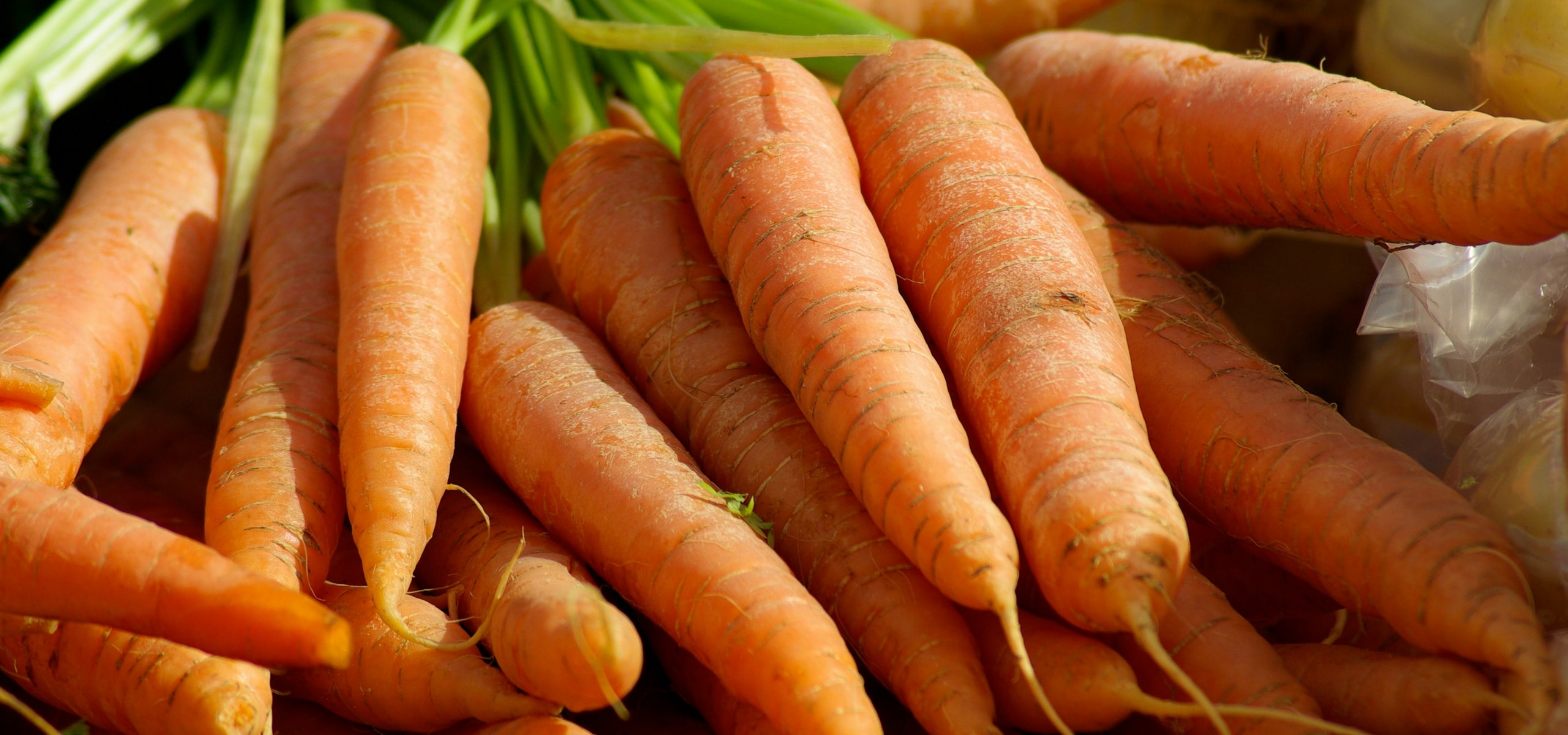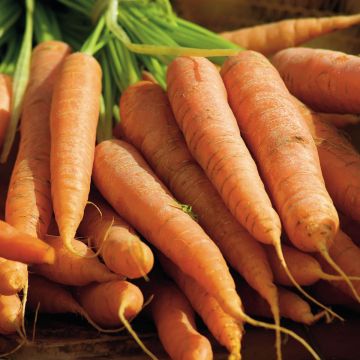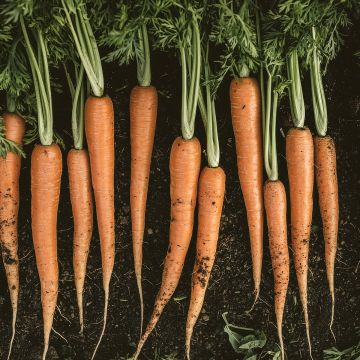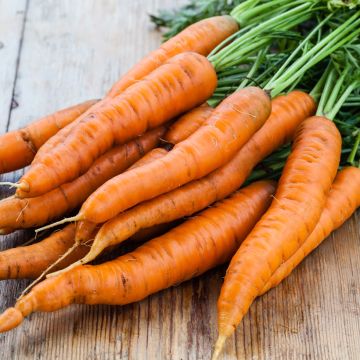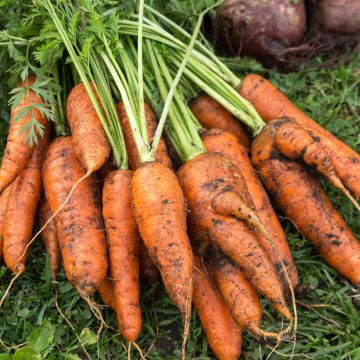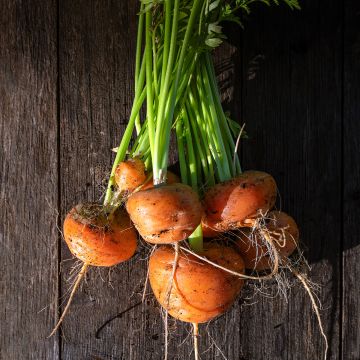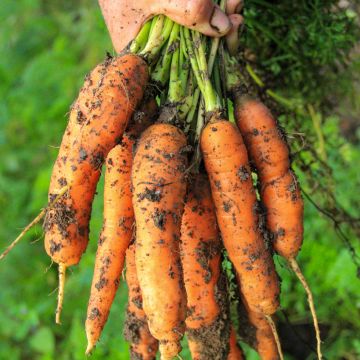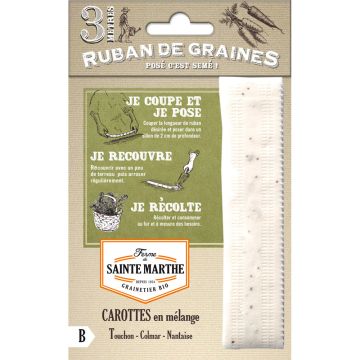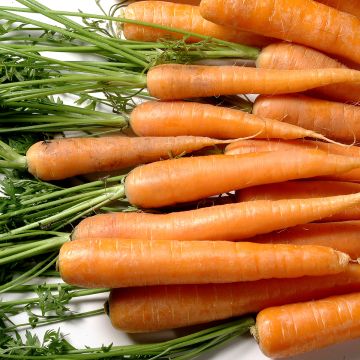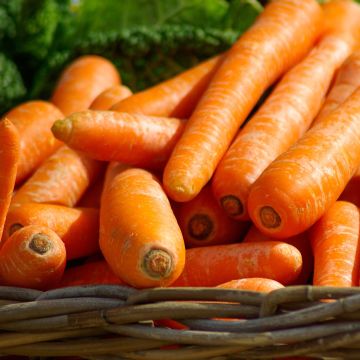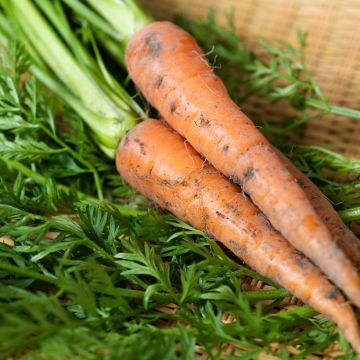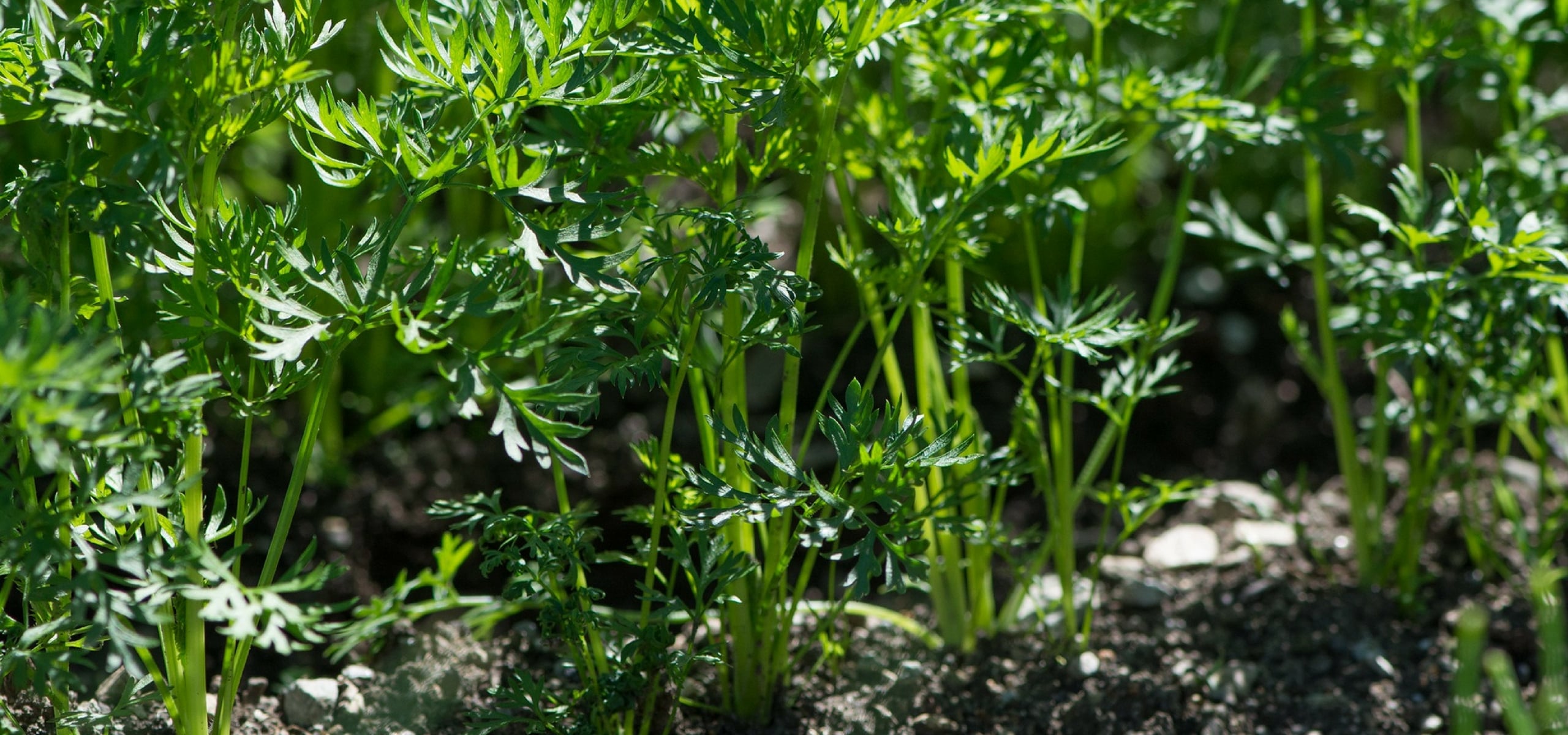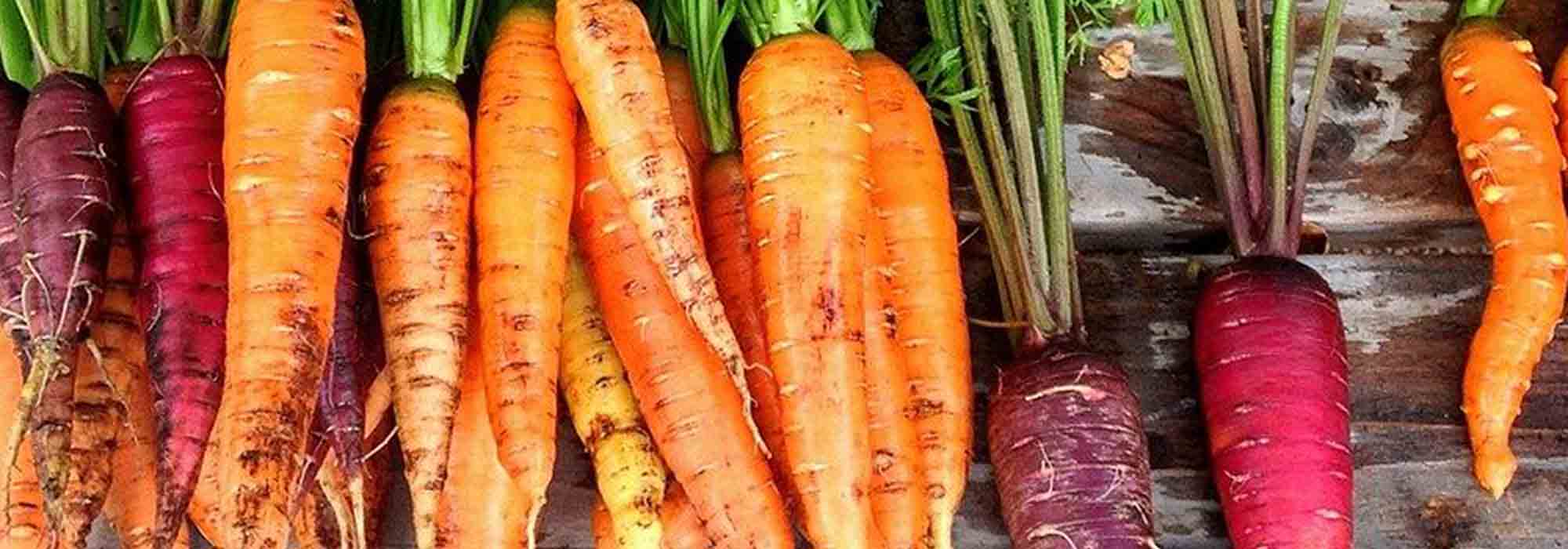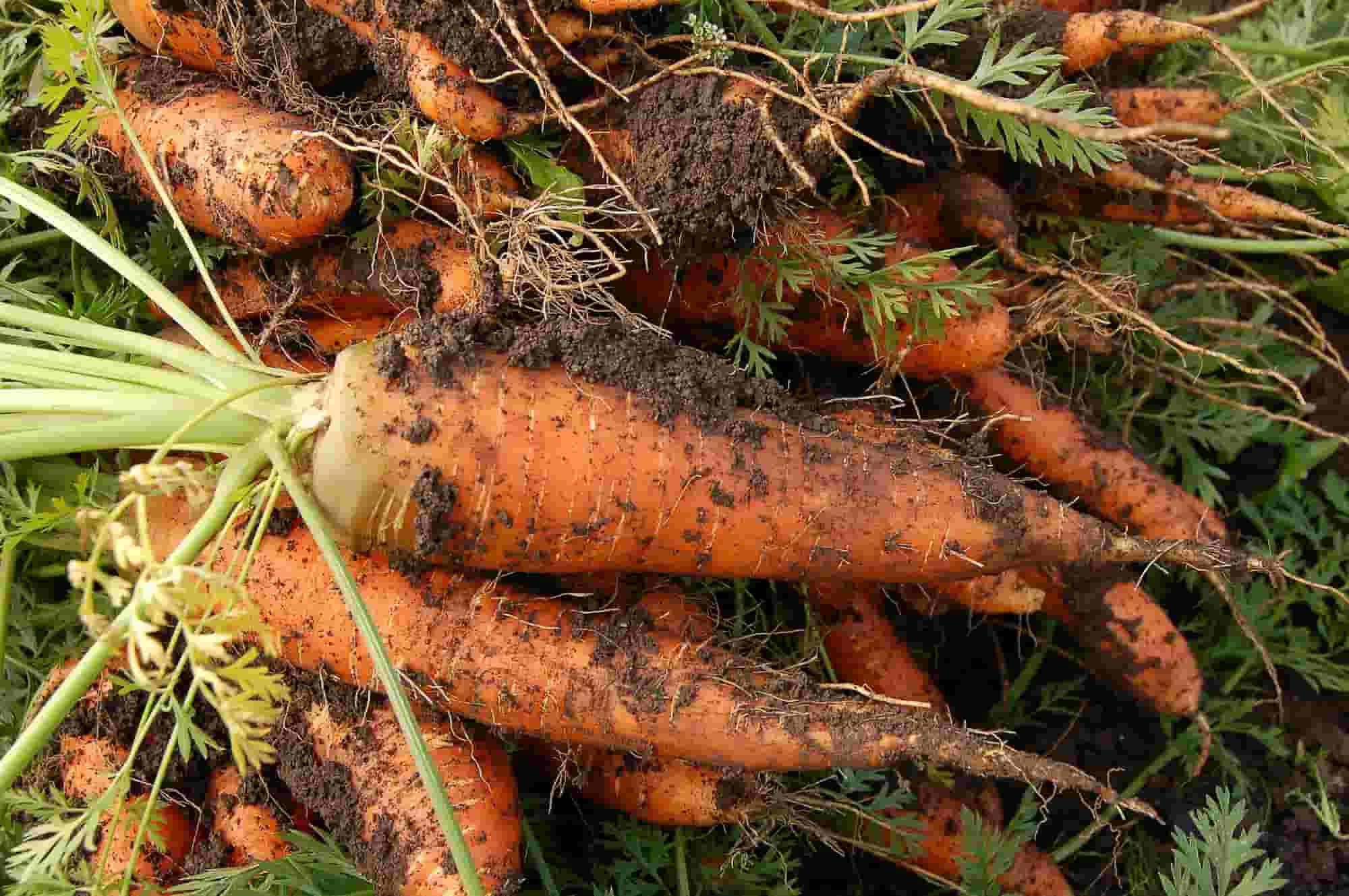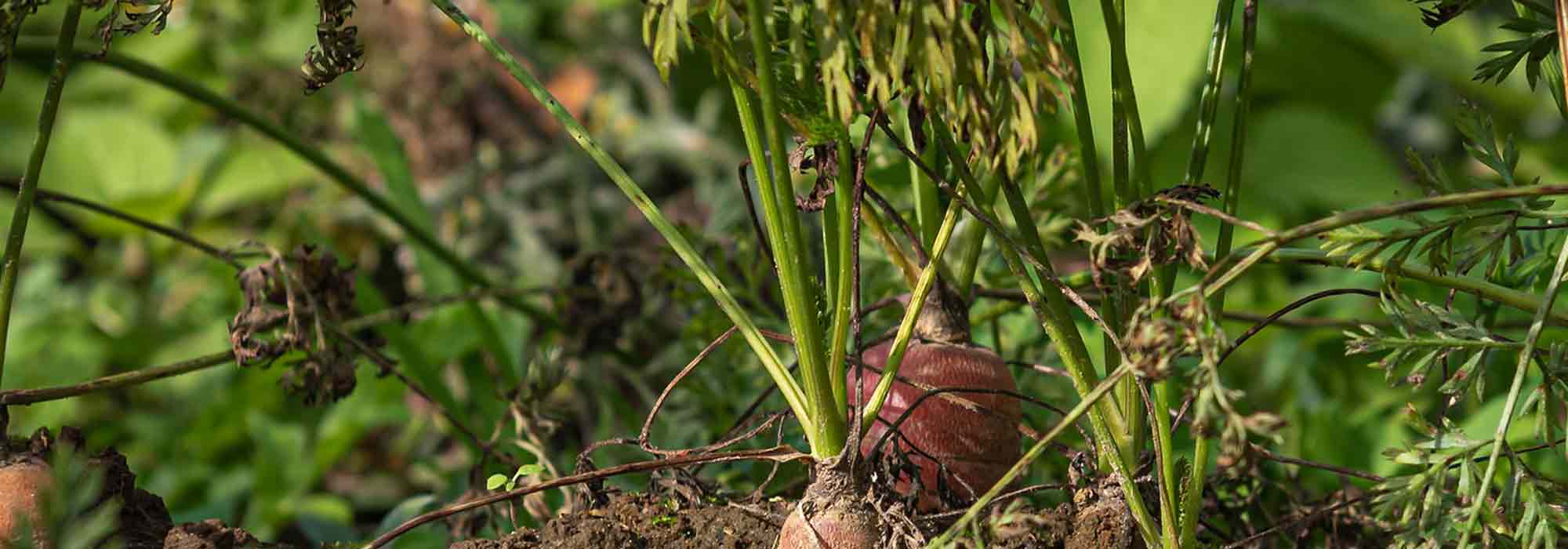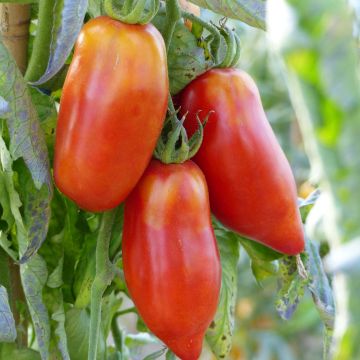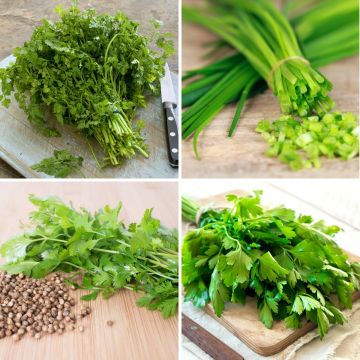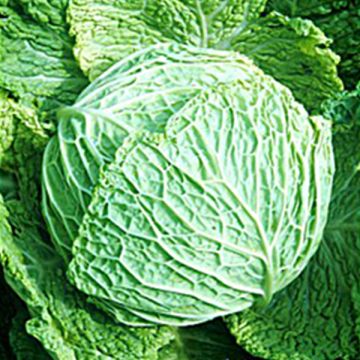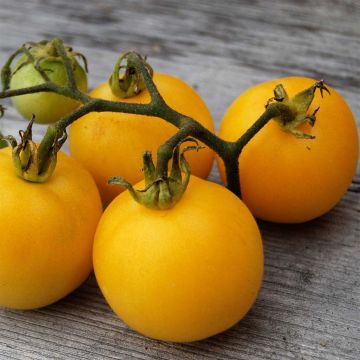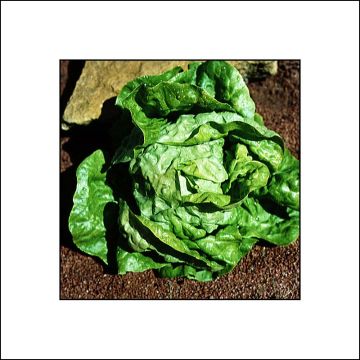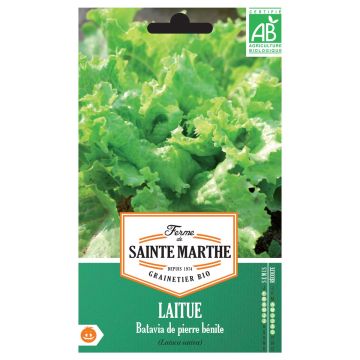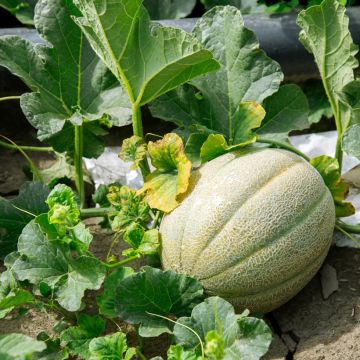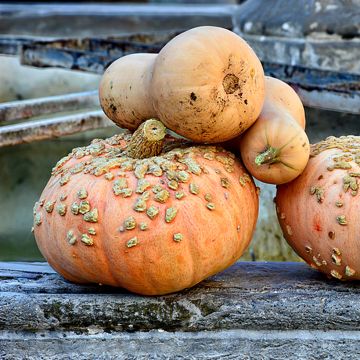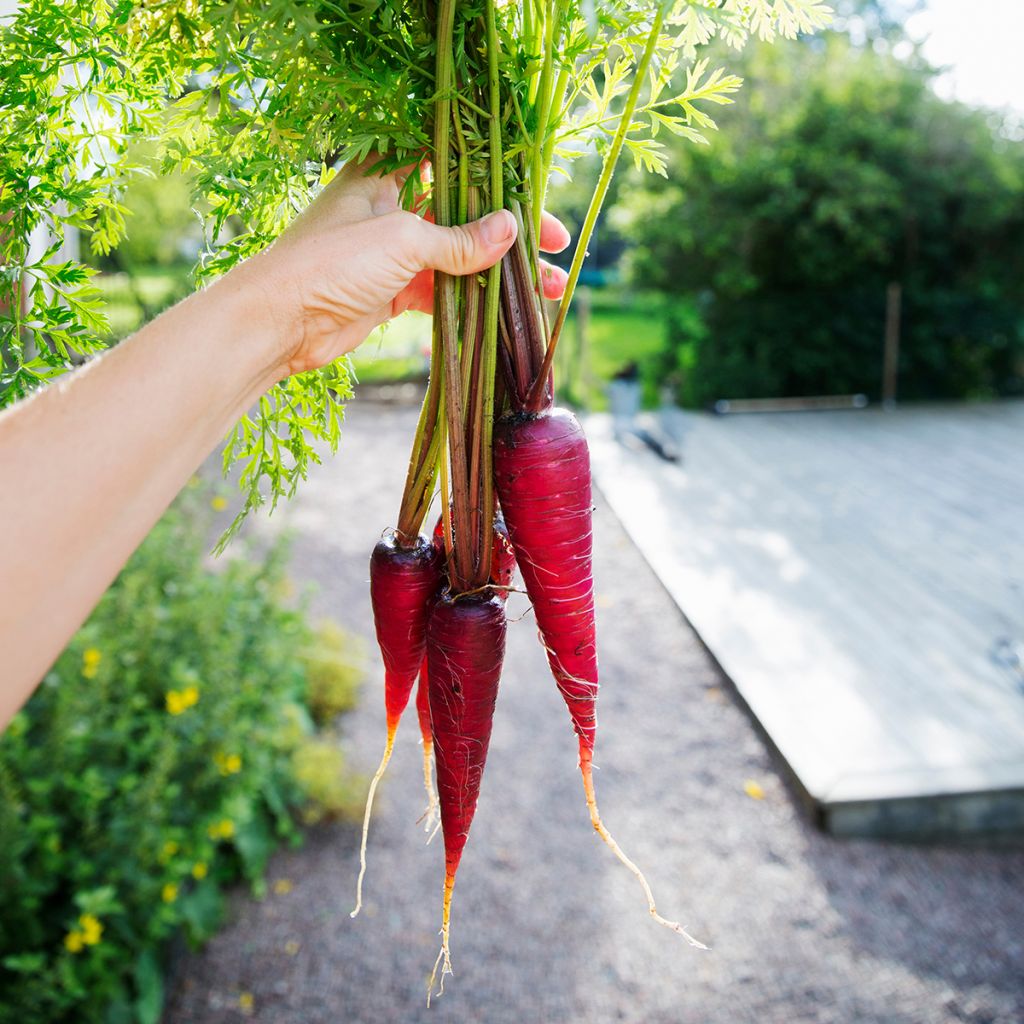

Carotte Purple Dragon - Graines
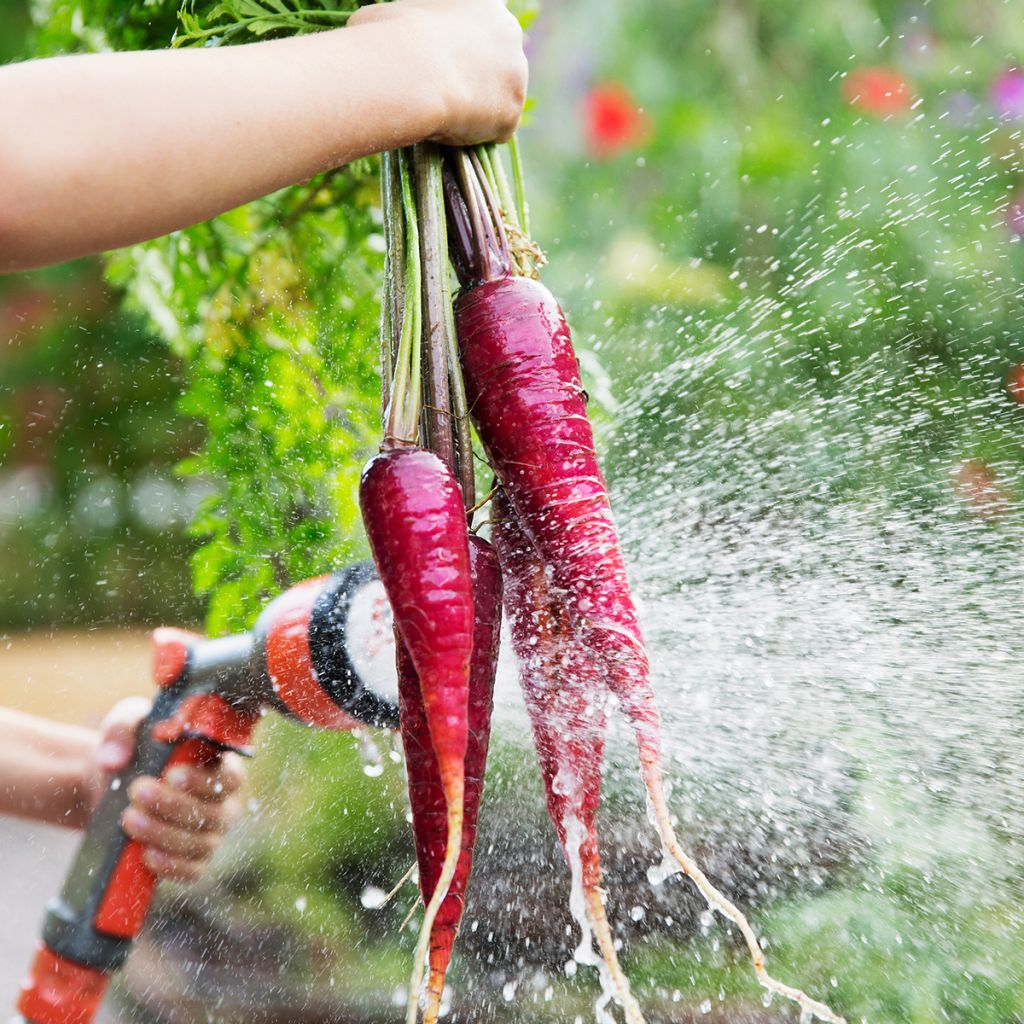

Carotte Purple Dragon - Graines
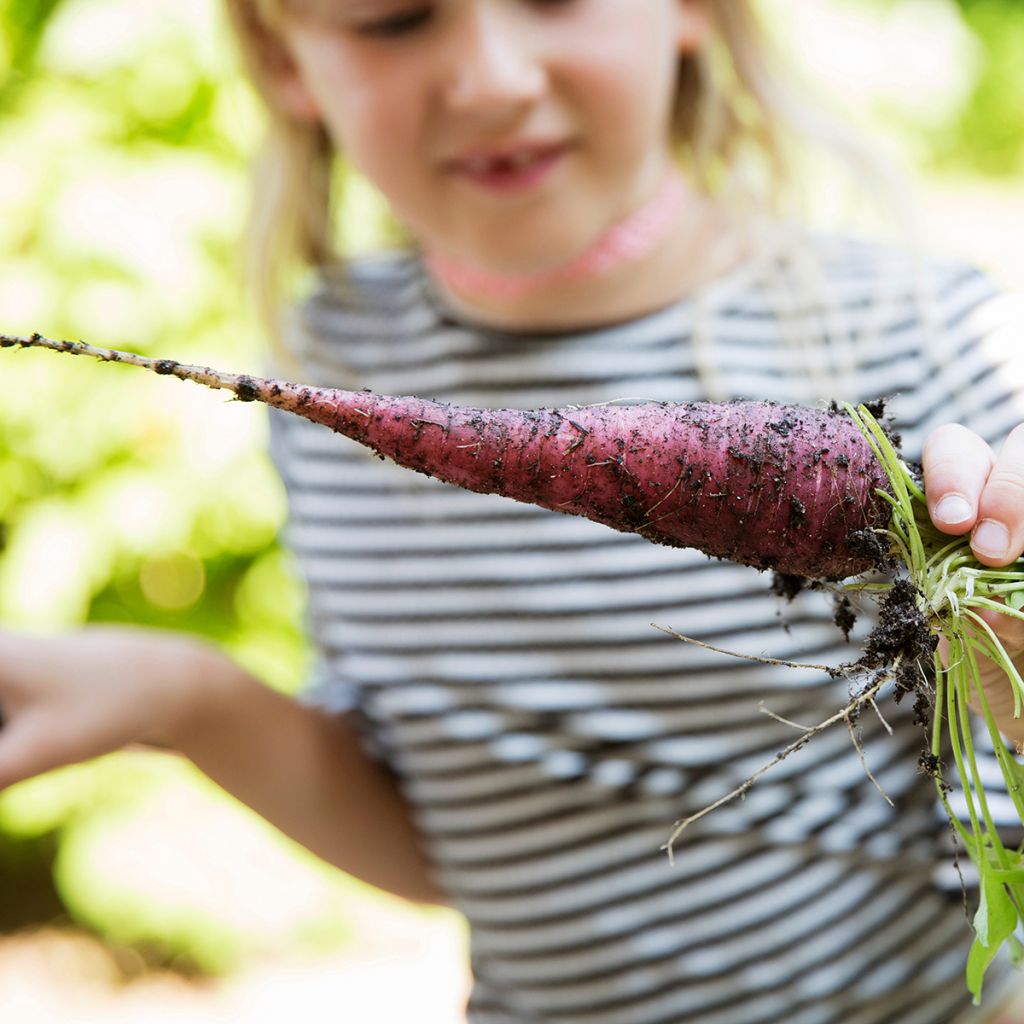

Carotte Purple Dragon - Graines
Daucus carota 'Purple Dragon'
Daucus carota Purple Dragon
Wild carrot, Queen Anne's lace, bird's nest, bishop's lace
Special offer!
Receive a €20 voucher for any order over €90 (excluding delivery costs, credit notes, and plastic-free options)!
1- Add your favorite plants to your cart.
2- Once you have reached €90, confirm your order (you can even choose the delivery date!).
3- As soon as your order is shipped, you will receive an email containing your voucher code, valid for 3 months (90 days).
Your voucher is unique and can only be used once, for any order with a minimum value of €20, excluding delivery costs.
Can be combined with other current offers, non-divisible and non-refundable.
Home or relay delivery (depending on size and destination)
Schedule delivery date,
and select date in basket
This plant carries a 6 months recovery warranty
More information
We guarantee the quality of our plants for a full growing cycle, and will replace at our expense any plant that fails to recover under normal climatic and planting conditions.
Description
The 'Purple Dragon' Carrot, developed by Dr. John Navazio, is an heirloom variety that has a lycopene (antioxidant) content similar to that of a tomato. Its deep red skin and yellow-orange flesh add colour to dishes and plates. When cooked, its sweet and spicy flavours enhance creamy purees or delicious stews. Its root is conical and stout, with a medium length of 18 to 22cm (7 to 9in), tapering at the tip. Productive, it thrives in heavy and clayey soil. Sow it in place from late February, in a protected location, until July depending on the region. Harvest from mid-May to November, depending on the sowing period.
The Carrot is a biennial herbaceous plant cultivated as an annual. It belongs to the Apiaceae family (formerly Umbelliferae). This vegetable with highly divided aromatic leaves is grown for its fleshy roots. Depending on the variety, they can be long, medium-long, or sometimes round. Carrots are usually orange in colour, but can also be yellow, white, or purple. They are rich in carotene and can be consumed both raw and cooked. Their tops are also delicious in soups.
In the vegetable garden, sow it in a sunny or semi-shaded spot. Carrots are not very demanding when it comes to soil type. However, the best roots will be harvested from a rich, light, sandy soil. It is important to prepare the soil by deep digging (30cm (12in)) in autumn, incorporating 2 to 3kg of well-decomposed manure or compost. Remove all stones during this process.
Harvest: During the season, harvest carrots as needed. To extract the roots from the soil, use a garden fork, being careful not to damage the root. Injuries to the roots can lead to rot during storage.
Yields can vary depending on the type of cultivation and carrot variety. As an indication, plan for between 1 and 1.5kg/m² for an early crop, around 3kg/m² for a mid-season crop of half-long carrots, and up to 5kg for a late crop of long carrots.
Storage: Carrots can be stored in the ground at the cultivation site, but this ties up space in the vegetable garden. In winter, the roots should be protected from frost with a thick layer of dead leaves. Storage in a root cellar is an excellent long-term solution. In a frost-free and well-ventilated location, cut the foliage at the collar and place the roots next to each other on a bed of moist sand. Cover them with a 2cm (1in) layer of sand and add the next row.
Gardener's tip: Carrot germination is often slow, and weeds grow faster... Here are two tips to limit weed growth:
- Practice a false sowing: about 2 to 3 weeks before sowing, prepare the soil finely. Wait for the weed seeds in the soil to start germinating. As soon as they appear, rake the surface crosswise to eliminate these seedlings. You can then begin sowing.
- Sow radishes and carrots on the same row and at the same time. Radishes germinate quickly and will mark the row without delay. Once harvested, the radishes will make way for the carrots to grow.
Harvest
Plant habit
Foliage
Botanical data
Daucus
carota
Purple Dragon
Apiaceae
Wild carrot, Queen Anne's lace, bird's nest, bishop's lace
Cultivar or hybrid
Annual
Other Carrot seeds
View all →Planting and care
Sowing description:
A well-spaced sowing is practiced in a flat furrow about ten centimetres wide and 2cm (1in) deep. The rows should be 25cm (10in) apart. Cover the seeds with the soil spread along the furrow and then water. Germination takes between 10 and 15 days. As soon as the seedlings reach a height of 3 to 4cm (1 to 2in), thinning is done by removing excess plants, leaving only one every 1 to 2cm (0 to 1in). A second thinning pass one to two weeks later will keep only the most beautiful plants every 3 to 5cm (1 to 2in) for shorter crops (Culture N°1 and 2) and 5 to 8cm (2 to 3in) for longer crops that will form larger roots (Culture N°3, 4 and 5).
The 5 types of crops:
Culture N°1: forced cultivation. Sowing is done in January-February, under a heated shelter at 15°C (59°F), for a harvest of young carrots 75 days later.
Culture N°2: early cultivation. Sowing is done in February-March, under an unheated shelter, for a harvest of tender carrots in June-July.
Culture N°3: seasonal cultivation. Sowing is done in March-April, in open ground, for a harvest of half-long carrots from July to September.
Culture N°4: late season cultivation. Sowing is done in June-July, in open ground, for a harvest of half-long carrots from September to November.
Culture N°5: late cultivation. Sowing is done in October-November, under unheated shelters, for a spring carrot harvest in May. During freezing periods, young plants are protected under a layer of dead leaves.
Seedlings
Care
Intended location
Planting & care advice
This item has not been reviewed yet - be the first to leave a review about it.
Similar products
Haven't found what you were looking for?
Hardiness is the lowest winter temperature a plant can endure without suffering serious damage or even dying. However, hardiness is affected by location (a sheltered area, such as a patio), protection (winter cover) and soil type (hardiness is improved by well-drained soil).

Photo Sharing Terms & Conditions
In order to encourage gardeners to interact and share their experiences, Promesse de fleurs offers various media enabling content to be uploaded onto its Site - in particular via the ‘Photo sharing’ module.
The User agrees to refrain from:
- Posting any content that is illegal, prejudicial, insulting, racist, inciteful to hatred, revisionist, contrary to public decency, that infringes on privacy or on the privacy rights of third parties, in particular the publicity rights of persons and goods, intellectual property rights, or the right to privacy.
- Submitting content on behalf of a third party;
- Impersonate the identity of a third party and/or publish any personal information about a third party;
In general, the User undertakes to refrain from any unethical behaviour.
All Content (in particular text, comments, files, images, photos, videos, creative works, etc.), which may be subject to property or intellectual property rights, image or other private rights, shall remain the property of the User, subject to the limited rights granted by the terms of the licence granted by Promesse de fleurs as stated below. Users are at liberty to publish or not to publish such Content on the Site, notably via the ‘Photo Sharing’ facility, and accept that this Content shall be made public and freely accessible, notably on the Internet.
Users further acknowledge, undertake to have ,and guarantee that they hold all necessary rights and permissions to publish such material on the Site, in particular with regard to the legislation in force pertaining to any privacy, property, intellectual property, image, or contractual rights, or rights of any other nature. By publishing such Content on the Site, Users acknowledge accepting full liability as publishers of the Content within the meaning of the law, and grant Promesse de fleurs, free of charge, an inclusive, worldwide licence for the said Content for the entire duration of its publication, including all reproduction, representation, up/downloading, displaying, performing, transmission, and storage rights.
Users also grant permission for their name to be linked to the Content and accept that this link may not always be made available.
By engaging in posting material, Users consent to their Content becoming automatically accessible on the Internet, in particular on other sites and/or blogs and/or web pages of the Promesse de fleurs site, including in particular social pages and the Promesse de fleurs catalogue.
Users may secure the removal of entrusted content free of charge by issuing a simple request via our contact form.
The flowering period indicated on our website applies to countries and regions located in USDA zone 8 (France, the United Kingdom, Ireland, the Netherlands, etc.)
It will vary according to where you live:
- In zones 9 to 10 (Italy, Spain, Greece, etc.), flowering will occur about 2 to 4 weeks earlier.
- In zones 6 to 7 (Germany, Poland, Slovenia, and lower mountainous regions), flowering will be delayed by 2 to 3 weeks.
- In zone 5 (Central Europe, Scandinavia), blooming will be delayed by 3 to 5 weeks.
In temperate climates, pruning of spring-flowering shrubs (forsythia, spireas, etc.) should be done just after flowering.
Pruning of summer-flowering shrubs (Indian Lilac, Perovskia, etc.) can be done in winter or spring.
In cold regions as well as with frost-sensitive plants, avoid pruning too early when severe frosts may still occur.
The planting period indicated on our website applies to countries and regions located in USDA zone 8 (France, United Kingdom, Ireland, Netherlands).
It will vary according to where you live:
- In Mediterranean zones (Marseille, Madrid, Milan, etc.), autumn and winter are the best planting periods.
- In continental zones (Strasbourg, Munich, Vienna, etc.), delay planting by 2 to 3 weeks in spring and bring it forward by 2 to 4 weeks in autumn.
- In mountainous regions (the Alps, Pyrenees, Carpathians, etc.), it is best to plant in late spring (May-June) or late summer (August-September).
The harvesting period indicated on our website applies to countries and regions in USDA zone 8 (France, England, Ireland, the Netherlands).
In colder areas (Scandinavia, Poland, Austria...) fruit and vegetable harvests are likely to be delayed by 3-4 weeks.
In warmer areas (Italy, Spain, Greece, etc.), harvesting will probably take place earlier, depending on weather conditions.
The sowing periods indicated on our website apply to countries and regions within USDA Zone 8 (France, UK, Ireland, Netherlands).
In colder areas (Scandinavia, Poland, Austria...), delay any outdoor sowing by 3-4 weeks, or sow under glass.
In warmer climes (Italy, Spain, Greece, etc.), bring outdoor sowing forward by a few weeks.






























